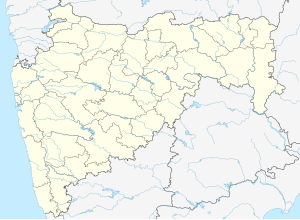Khanderi
| Khanderi | |
|---|---|
| खांदेरी | |
| Raigad District, Maharashtra | |
| Coordinates | 18°42′15″N 72°48′47″E / 18.7042°N 72.8131°E |
| Type | Sea fort |
| Site history | |
| Built | 1660 |
| Built by |
[[Chatrapati Shivaji Raje ]] |
[[Chatrapati Shivaji Raje
Khanderi (Khanderi Sea island) is an island with a fort, located south of Mumbai, along the coast of Maharashtra, India.
Khanderi (Official name Kanhoji Angre Island, Old British name Kennery) is located 5 km off the coast of Maharashtra (off Thal, Kihim) and 20 km south of Mumbai. Khanderi, along with its sister fort Underi (Jaidurg) formed the major fortification along the Maharashtra coast, the former falling under Shivaji's control and the latter under his opponents, the Siddis.
The island consists of two high hills, one facing north and the other facing south. Initially, the islands of Underi and Khanderi were uninhabited. In 1679, Khanderi was occupied by the forces of Shivaji, who oversaw the building of the fortifying walls. Subsequently, Khanderi fort was built during the reign of the Maratha king Shivaji in 1660 CE to keep a check on the Siddis at Murud-Janjira fort and was the site of many battles between Shivaji's forces and the navy of Sidi. It contained two wells to supply water to the forces within, and a temple of Sri Betal.
The fort was subsequently ceded in 1818 to the forces of the British East India company at Bombay as part of the Peshwa territory
Most of the fort is still intact, with the most prominent structure being a lighthouse built by the British in June 1867 and the two storey building upon which the lighthouse is located.
The fort is a restricted area, which falls under the jurisdiction of the Indian navy.
Additionally, the fort has a few old metal canons, the tomb of Daud Pir, a local saint and a musical stone that emits metallic musical notes when struck.
In 1998, Khanderi island was renamed Kanhoji Angre Island in honour of the Maratha General Kanhoji Angre.
...
Wikipedia

